Toyota C-HR VS XPeng P7 – Specs, Efficiency & Price Comparison
Find out now which car fits your needs better!
The Toyota C-HR (SUV) is powered by a Full Hybrid or Plugin Hybrid engine and comes with a Automatic transmission. In comparison, the XPeng P7 (Sedan) features a Electric engine and a Automatic gearbox.
When it comes to boot capacity, the Toyota C-HR offers 447 L, while the XPeng P7 provides 440 L – depending on what matters most to you. If you’re looking for more power, you’ll need to decide whether the 223 HP of the Toyota C-HR or the 473 HP of the XPeng P7 suits your needs better.
There are also differences in efficiency: 0.80 L vs 16.80 kWh. In terms of price, the Toyota C-HR starts at 29100 £, while the XPeng P7 is available from 42500 £.
Compare all the key specs now and find out which model fits your lifestyle best!
Toyota C-HR
The Toyota C-HR stands out with its distinctive and bold design that combines sleek, angular lines with a sporty posture. Its comfortable and stylish interior is equipped with advanced technology features, providing a seamless driving experience. The vehicle offers impressive handling and performance, making it a compelling choice for those who appreciate a blend of practicality and flair on the road.
details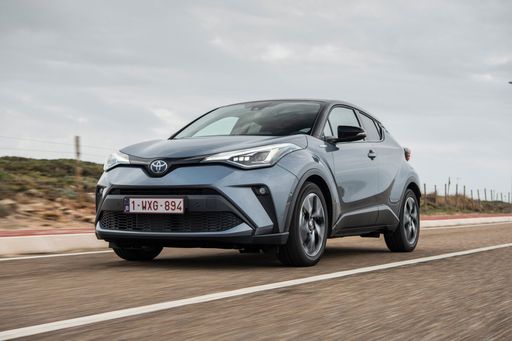 @ Toyota
@ Toyota
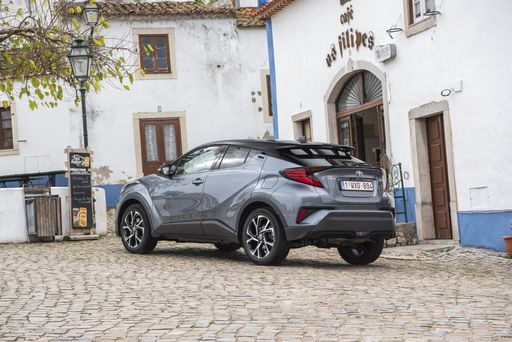 @ Toyota
@ Toyota
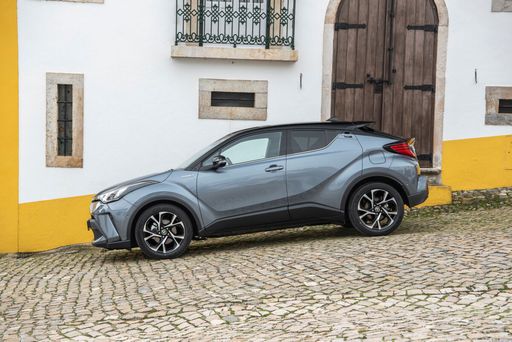 @ Toyota
@ Toyota
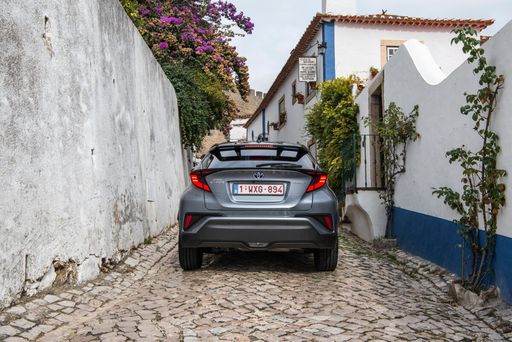 @ Toyota
@ Toyota
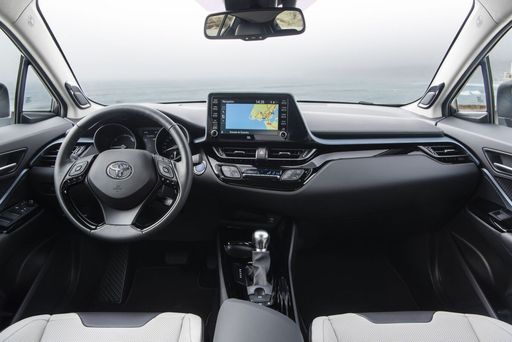 @ Toyota
@ Toyota
XPeng P7
The XPeng P7 is a sleek and stylish electric saloon that embodies the future of automotive innovation. With its modern design and advanced technology, it offers an impressive driving experience, combining luxury with sustainability. The interior is thoughtfully designed to provide comfort and convenience, making it a strong contender in the competitive market of electric vehicles.
details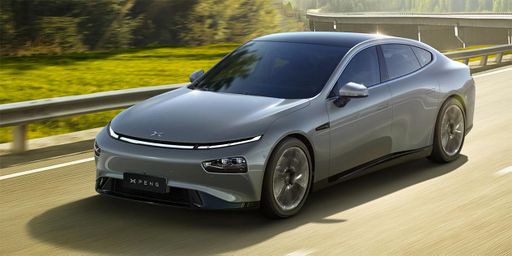 @ XPeng
@ XPeng
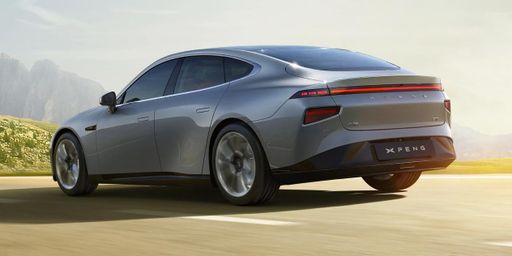 @ XPeng
@ XPeng
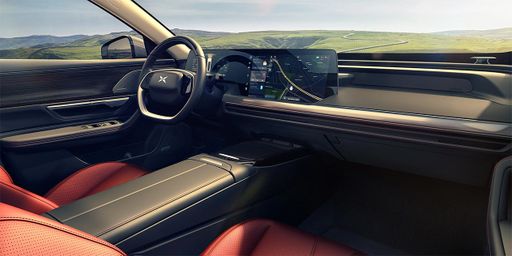 @ XPeng
@ XPeng

|

|
|
|
|
Costs and Consumption |
|
|---|---|
|
Price
29100 - 42800 £
|
Price
42500 - 59700 £
|
|
Consumption L/100km
0.8 - 5.1 L
|
Consumption L/100km
-
|
|
Consumption kWh/100km
-
|
Consumption kWh/100km
16.8 - 19.2 kWh
|
|
Electric Range
68 km
|
Electric Range
505 - 576 km
|
|
Battery Capacity
-
|
Battery Capacity
82.70 kWh
|
|
co2
17 - 115 g/km
|
co2
0 g/km
|
|
Fuel tank capacity
43 L
|
Fuel tank capacity
-
|
Dimensions and Body |
|
|---|---|
|
Body Type
SUV
|
Body Type
Sedan
|
|
Seats
5
|
Seats
5
|
|
Doors
5
|
Doors
5
|
|
Curb weight
1505 - 1755 kg
|
Curb weight
2020 - 2180 kg
|
|
Trunk capacity
350 - 447 L
|
Trunk capacity
440 L
|
|
Length
4362 mm
|
Length
4888 mm
|
|
Width
1832 mm
|
Width
1896 mm
|
|
Height
1558 - 1564 mm
|
Height
1450 mm
|
|
Payload
375 - 425 kg
|
Payload
420 - 430 kg
|
Engine and Performance |
|
|---|---|
|
Engine Type
Full Hybrid, Plugin Hybrid
|
Engine Type
Electric
|
|
Transmission
Automatic
|
Transmission
Automatic
|
|
Transmission Detail
-
|
Transmission Detail
-
|
|
Drive Type
Front-Wheel Drive, All-Wheel Drive
|
Drive Type
Rear-Wheel Drive, All-Wheel Drive
|
|
Power HP
140 - 223 HP
|
Power HP
276 - 473 HP
|
|
Acceleration 0-100km/h
7.4 - 9.9 s
|
Acceleration 0-100km/h
4.1 - 6.7 s
|
|
Max Speed
175 - 180 km/h
|
Max Speed
200 km/h
|
|
Torque
-
|
Torque
440 - 757 Nm
|
|
Number of Cylinders
4
|
Number of Cylinders
-
|
|
Power kW
103 - 164 kW
|
Power kW
203 - 348 kW
|
|
Engine capacity
1798 - 1987 cm3
|
Engine capacity
-
|
General |
|
|---|---|
|
Model Year
2024 - 2025
|
Model Year
2024
|
|
CO2 Efficiency Class
C, B
|
CO2 Efficiency Class
A
|
|
Brand
Toyota
|
Brand
XPeng
|
Toyota C-HR
Revolutionising the Crossover Segment: The Toyota C-HR
The Toyota C-HR has firmly established itself as a standout contender in the compact crossover segment. Known for its distinct design and hybrid capabilities, the C-HR continues to prioritise innovation and efficiency. In this article, we delve into the technical details that make the 2024 iteration a compelling choice for discerning buyers.
Distinctive Design and Aerodynamics
The Toyota C-HR boasts a striking design that combines angular lines with modern aesthetics. This isn't merely for show; the design enhances aerodynamics, improving fuel efficiency and handling. With dimensions of 4362mm in length and a sophisticated structure, the C-HR strikes a balance between urban agility and on-road stability.
Impressive Hybrid Powertrains
The C-HR lineup offers innovative hybrid and plug-in hybrid drivetrain options. The full hybrid system is tailored for those who seek both economic and environmental benefits. It combines a petrol engine with an electric motor to deliver power outputs ranging from 140 to 223 PS, achieving remarkable fuel consumption rates from 0.8 to 5.1 L/100km. The 2.0 Plug-In Hybrid variant impresses with an electric range of 67 km, ideal for urban commuters.
Unmatched Efficiency and Performance
Acceleration figures for the C-HR range from 7.4 to 9.9 seconds to reach 0-100 km/h, ensuring a responsive driving experience. Maximum speeds between 175 and 180 km/h cater to those who appreciate a bit of zest on the open road. Coupled with CVT automatic transmission and both front-wheel and all-wheel-drive configurations, the C-HR adapts to various driving conditions with ease.
Advanced Technology and Features
Inside, the C-HR is equipped with the latest technology aimed at providing connectivity and comfort. The model hosts an array of features across its diverse trim levels, including Business Edition, Lounge, and the sporty GR SPORT. Each variant is designed to meet the demands of different lifestyles, ensuring there's a C-HR model to suit every taste.
Sustainability and Cost Efficiency
With CO2 emissions ranging from 19 to 115 g/km, the C-HR stands as a testament to Toyota's commitment to sustainability. Financially savvy consumers will also appreciate the running cost, with monthly expenses from €959 to €1204, and a cost per km as low as 38.4 cents. Such efficiency makes the vehicle an attractive option for eco-minded buyers.
Conclusion: A Forward-Thinking Choice
The 2024 Toyota C-HR embodies Toyota's forward-thinking approach to automotive innovation, blending eco-friendly hybrid technologies with stylish design and practicality. It offers a glimpse into the future of driving, where efficiency meets elegance. Whether you're a city dweller or an adventure seeker, the C-HR promises a driving experience that is both enjoyable and environmentally conscious.
XPeng P7
Introducing the XPeng P7: A Revolution on Wheels
The XPeng P7 is not just a car; it's a statement. As an electric sports saloon, it combines cutting-edge technology with sleek design, redefining the standards of modern electric vehicles.
Performance That Puts the "Power" in Powertrain
At the heart of the XPeng P7 is a choice between rear-wheel and all-wheel drive systems, delivering phenomenal power of between 276 to 473 PS. With the top performance model accelerating from 0 to 100 km/h in just 4.1 seconds, this is a vehicle built for speed enthusiasts.
Impressive Range and Efficiency
The P7 boasts an electric range between 505 km and 576 km, thanks to its efficient power consumption of 16.8 to 19.2 kWh/100km and a substantial battery capacity of 82.7 kWh. This places it among the most efficient electric vehicles currently available.
Innovations for a Connected Journey
The XPeng P7 is equipped with the latest in automotive technology. Advanced driver-assist systems provide automatic steering and braking, ensuring both safety and comfort on long drives. Furthermore, its intelligent cockpit features a large touchscreen and AI voice interaction, keeping drivers connected and informed at all times.
Design and Comfort: Where Function Meets Form
With its stunning fastback design, the P7 is as attractive as it is aerodynamic. Measuring 4,888 mm in length, 1,896 mm in width, and 1,450 mm in height, this saloon offers ample space for passengers and boasts a generous 440-litre boot, easily accommodating the needs of a family or a business traveller.
Sustainability with Effective Luxury
While offering zero emissions and a CO2 efficiency rating of A, the XPeng P7 doesn't compromise on luxury. Featuring premium materials and finishes, the cabin environment is serene and sophisticated, making every journey a pleasure.
Pricing and Availability
Available with a price range between €49,600 and €69,600, the XPeng P7 provides various configurations that cater to different performance and lifestyle needs, offering a value proposition that few competitors can rival.
Conclusion
The XPeng P7 stands out in the crowded electric vehicle market through its exceptional balance of performance, technology, and design. It's a bold step forward for the brand, setting new standards for what drivers can expect from a modern electric saloon.
The prices and data displayed are estimates based on German list prices and may vary by country. This information is not legally binding.
